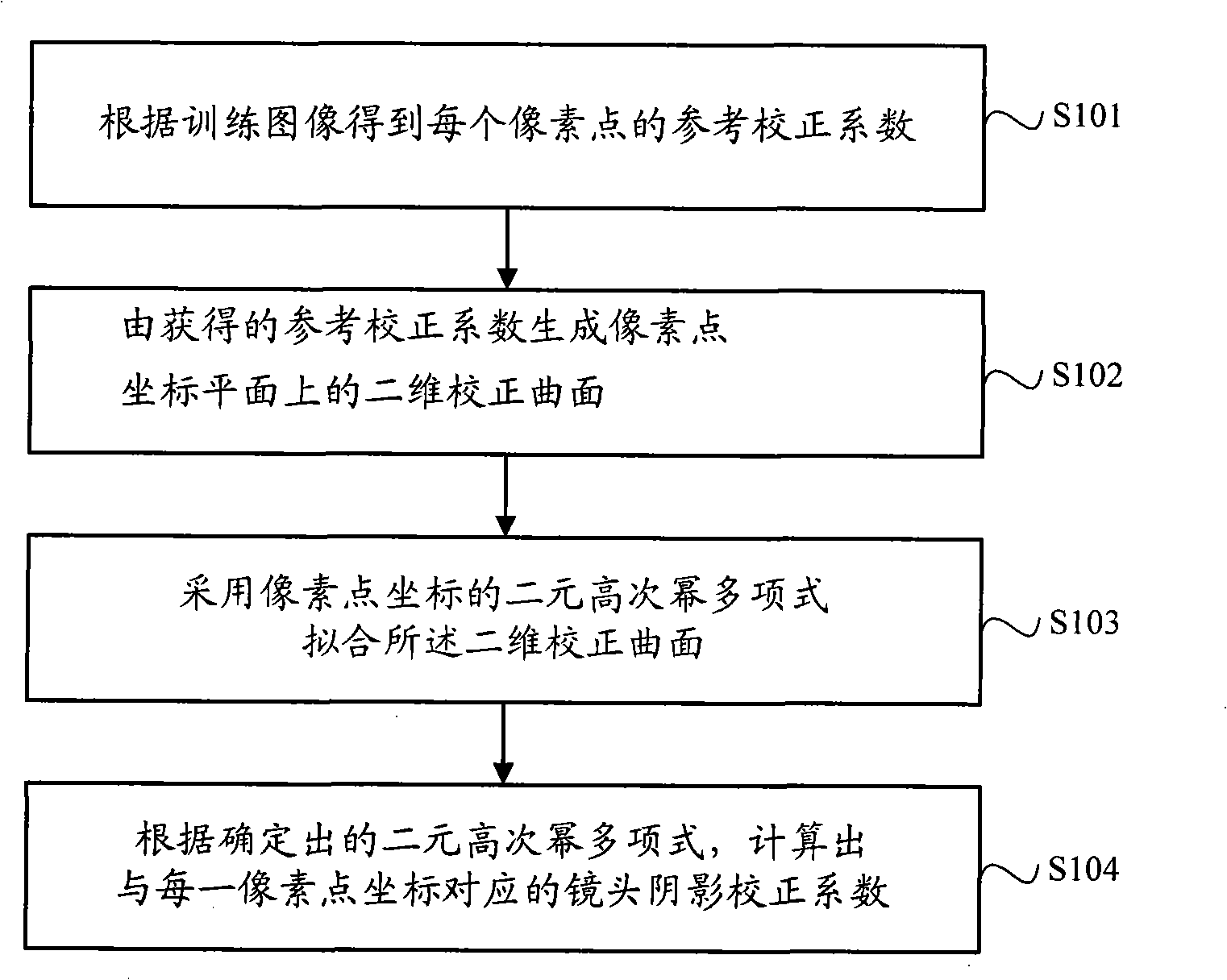Lens shade correction index confirming method, lens shade emendation method and device
A lens shading and correction coefficient technology, applied in the field of image processing, can solve the problems of poor lens effect and lack of versatility, and achieve good image correction effect
- Summary
- Abstract
- Description
- Claims
- Application Information
AI Technical Summary
Problems solved by technology
Method used
Image
Examples
Embodiment 1
[0054] see figure 1 , providing a lens shading correction coefficient determination method for Embodiment 1 of the present invention, comprising the following steps:
[0055] Step S101. Obtain a reference correction coefficient for each pixel according to the training image.
[0056] Specifically:
[0057] A training image is captured by a lens to obtain a captured image of the training image; wherein, the standard pixel value of each pixel in the training image is known. In practice, for the sake of simplicity, you can use a lens to shoot a piece of white paper with a uniform texture. For example, to obtain a captured image with a size of 640*480, assuming that the standard pixel value of each pixel in the training image is 255, because the lens In the presence of shadows, the pixel value of each pixel in the captured image may change (that is, the real pixel value of each pixel may not be equal to 255). Therefore, the real pixel value of each pixel in the captured image is o...
Embodiment 2
[0098] Embodiment 2 of the present invention provides a lens shading correction method, the specific process is as follows figure 2 shown, including:
[0099] Step S201, inputting an image to be corrected.
[0100] Step S202 , acquiring the pixel value of the pixel corresponding to the current pixel coordinate in order of the pixel coordinates, and acquiring the lens shading correction coefficient corresponding to the current pixel coordinate.
[0101] Specifically: according to the sequence of pixels in the image from top to bottom and from left to right, the pixel values of corresponding pixels are sequentially obtained; and then according to the pixel coordinates corresponding to the pixels, the corresponding lens shading correction coefficients are obtained. Wherein, the lens shading correction coefficient corresponding to each pixel coordinate is determined by using the method described in the first embodiment.
[0102] Step S203: Multiply the acquired pixel value by...
Embodiment 3
[0111] According to the method for determining the lens shading correction coefficient provided in the first embodiment of the present invention, the third embodiment provides a corresponding device for determining the lens shading correction coefficient, and its structural diagram is as follows image 3 As shown, it includes: a reference correction coefficient acquisition unit 31 , a two-dimensional correction surface generation unit 32 , a fitting unit 33 and a lens shading correction coefficient calculation unit 34 . in:
[0112] Reference correction coefficient acquisition unit 31, for obtaining and outputting the reference correction coefficient of each pixel according to the training image;
[0113] A two-dimensional correction surface generation unit 32, configured to receive the reference correction coefficient output by the reference correction coefficient acquisition unit 31, and generate a two-dimensional correction surface on the pixel coordinate plane;
[0114] T...
PUM
 Login to View More
Login to View More Abstract
Description
Claims
Application Information
 Login to View More
Login to View More - R&D
- Intellectual Property
- Life Sciences
- Materials
- Tech Scout
- Unparalleled Data Quality
- Higher Quality Content
- 60% Fewer Hallucinations
Browse by: Latest US Patents, China's latest patents, Technical Efficacy Thesaurus, Application Domain, Technology Topic, Popular Technical Reports.
© 2025 PatSnap. All rights reserved.Legal|Privacy policy|Modern Slavery Act Transparency Statement|Sitemap|About US| Contact US: help@patsnap.com



